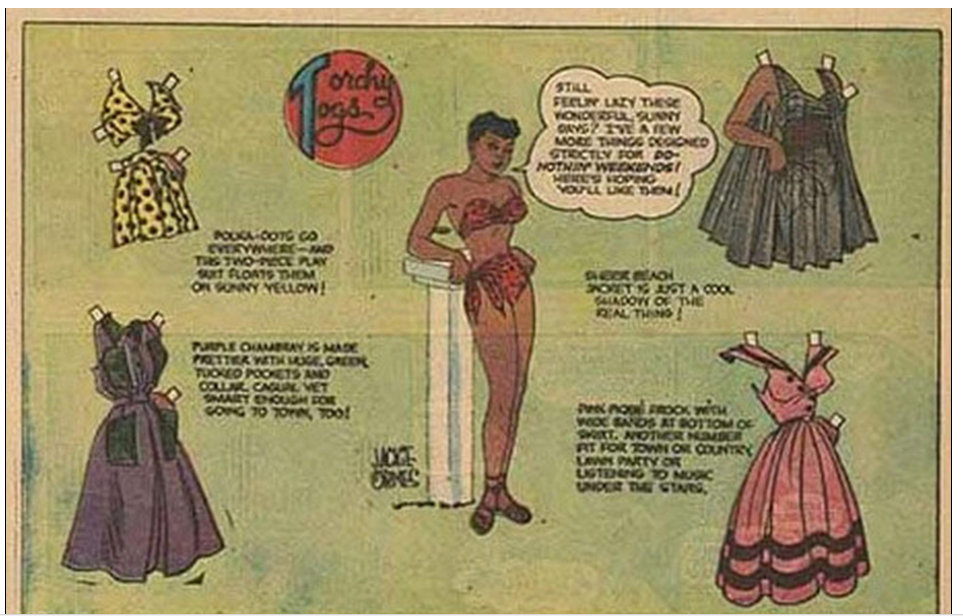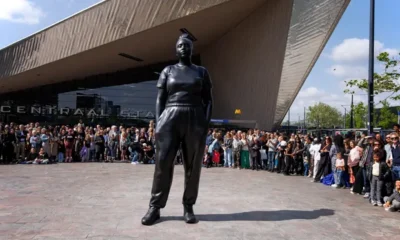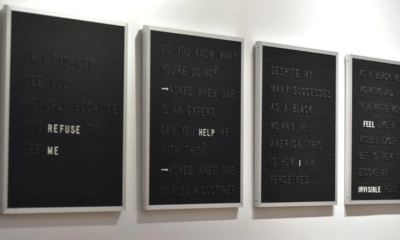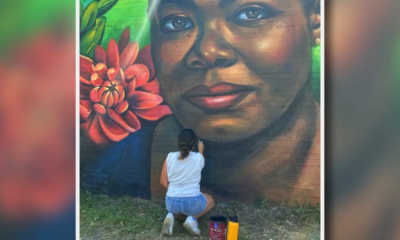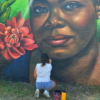Black Women in Arts
The rediscovered legacy of Jackie Ormes, the first black woman with a syndicated comic strip
One of the more essential obligations of a hall of fame is to illuminate anew the world-class talents that generations may have forgotten.
This week, the Will Eisner Comic Awards Hall of Fame fulfilled that function brilliantly.
That’s because too few fans of American pop culture recognize the name Jackie Ormes.
Born more than a century ago in Pittsburgh, Zelda Mavin Jackson was going by her married surname by 1937, when she became the first African-American woman to create a syndicated newspaper comic strip. She was a pioneer for decades, starting with the debut of “Torchy Brown in ‘Dixie to Harlem’” in the Pittsburgh Courier and continuing through such strips as “Patty-Jo ‘n’ Ginger.”
The Eisner Awards, which have been inducting great comics contributors for three decades, have now seen fit to include Ormes, who drew for two decades and, even after ending her cartooning career, was also a Chicago activist during the civil rights movement.
The Eisners, which are presented midsummer in San Diego during Comic-Con International, have increasingly diversified their Hall of Fame inductees in recent years, including such creators of color as Antonio Prohías, George Perez and brothers Gilbert and Jaime Hernandez in 2017.
Ormes represents an especially crucial addition, though, because her career stretches back to a time when she was redefining representation of black characters on the comics page. Her three-dimensional characters included Torchy Brown, who in the ’30s headed northward from her rural Mississippi to see whether she could make it at Harlem’s Cotton Club. Ormes also imbued her later strip “Patty-Jo ‘n’ Ginger” with biting political commentary; that comic would spawn a Patty-Jo doll.
“It is very encouraging to see Jackie Ormes receive this well-earned honor,” Martha Kennedy, curator of Popular & Applied Graphic Arts at the Library of Congress, tells The Washington Post. “Being both a woman and African-American made breaking into comics unusually challenging for her, but she forged a groundbreaking career in the field and produced an impressive body of innovative, thoughtful work in the four features she created.”
Ormes also created the comic “Candy,” which centered on a sharp-tongued domestic worker, and brought back her first comics character in 1950 for “Torchy in Heartbeats.”
A 1951 example of “Torchy in Heartbeats” can now be seen in the Kennedy-curated exhibit “Drawn to Purpose: American Women Illustrators and Cartoonists,” running through Oct. 20 at the Library of Congress’s Graphic Arts Galleries.
Also represented in that “Drawn to Purpose” show is Barbara Brandon-Croft, who in 1991 became the first nationally syndicated black female cartoonist. The creator of the sociopolitical strip “Where I’m Coming From,” she salutes the Eisner Hall of Fame’s decision.
“Finally! I’ve been singing her praises since becoming a cartoonist myself,” Brandon-Croft says of Ormes via email. “With my dad (Brumsic Brandon Jr.) being a pioneering cartoonist, I made a point to learn the history.
“Whenever I’m asked about being the first black woman to be nationally syndicated, I say: ’Hold it. I’m only the first …
Please read original article- The rediscovered legacy of Jackie Ormes, the first black woman with a syndicated comic strip



